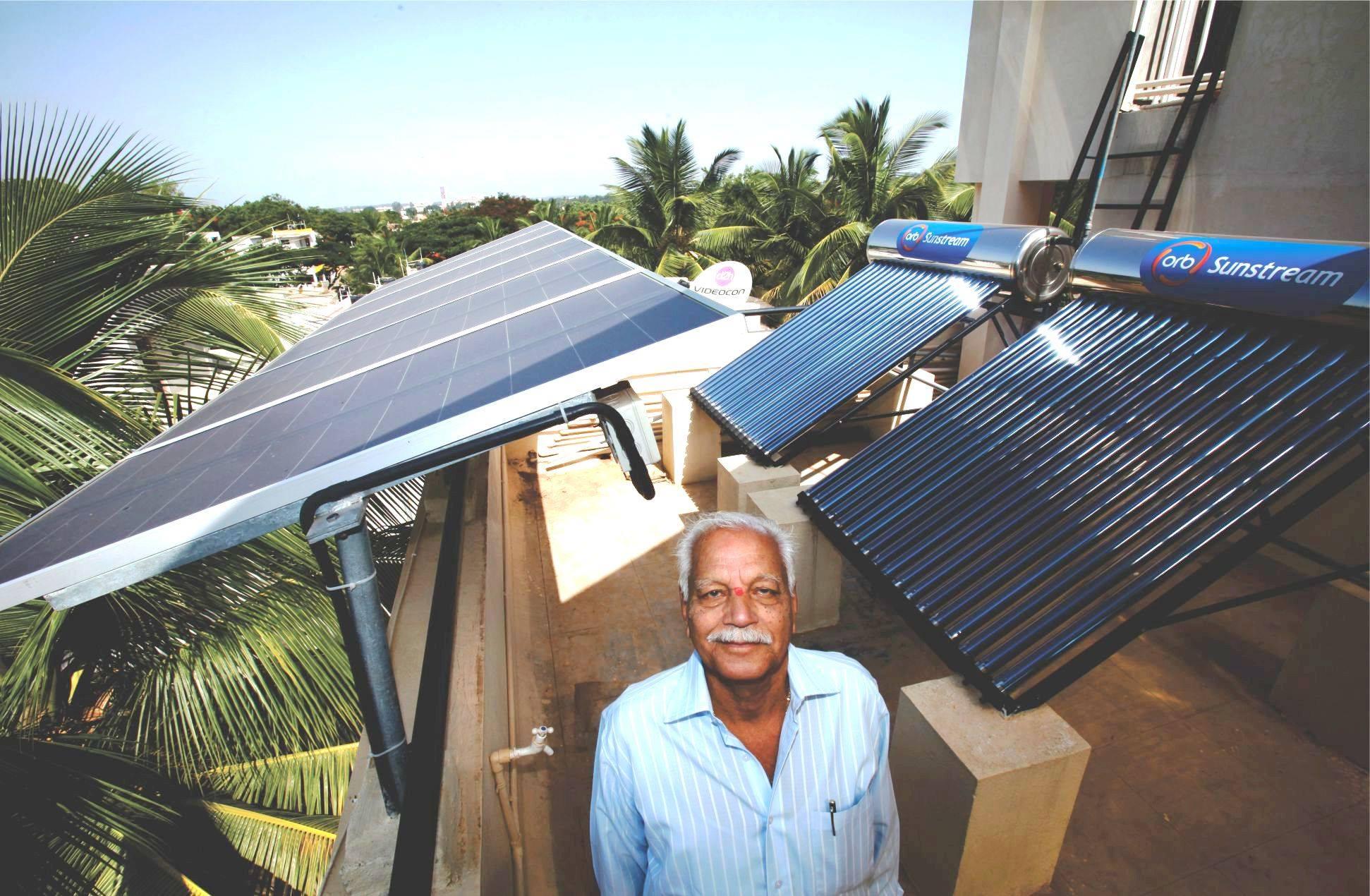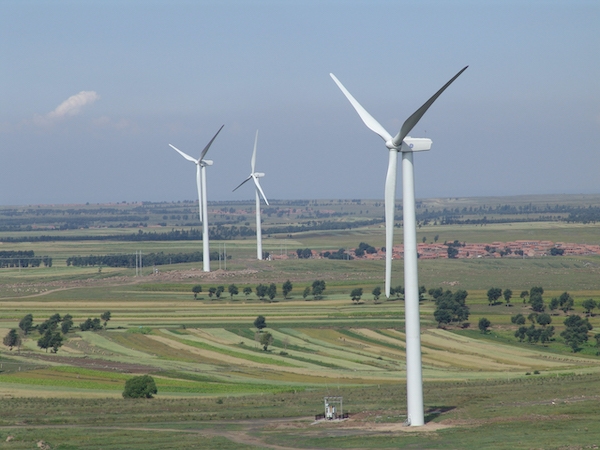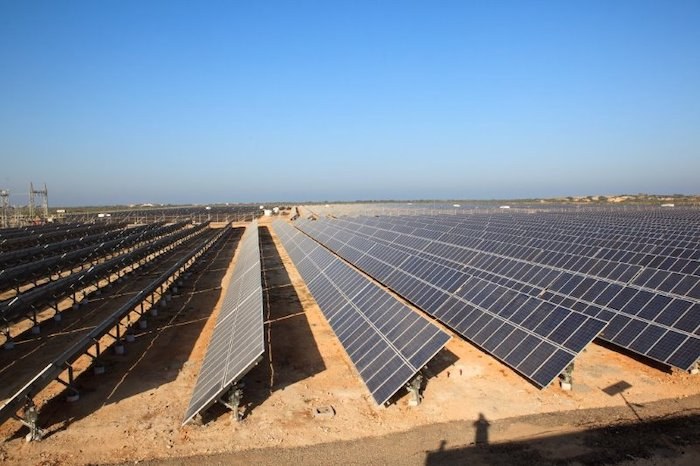The science is clear: to limit global warming to no more than 1.5°C - as mandated in the Paris Agreement - emissions must be reduced by 45% by 2030 and we must reach net zero by 2050. Companies have a vital role to play in achieving these global climate goals.
Carbon offsets enable companies to reach net zero faster and more cost-effectively while providing much-needed support and sustainable finance for projects fighting climate change. Reaching net zero carbon emissions is a lofty but important target, and carbon offsets are a globally recognized tool to making it achievable.
Carbon offsets, otherwise called carbon offsetting, allows businesses and governments to “offset” their greenhouse gas emissions by investing in projects that either reduce emissions or store carbon.
It’s a simple fact that some companies and governments emit more emissions than others. This is because some can cut their emissions more easily or have less to reduce in the first place. For other organizations emitting CO2 can be unavoidable due to the nature and scope of their work.
Carbon offsets allow those entities that find it more difficult to reduce their emissions to still reduce the overall net emissions produced in the world. By investing in projects that reduce greenhouse gasses elsewhere this not only compensates for the emissions produced but with voluntary purchase of carbon credits can actually lower net emissions.
It doesn’t matter where the emissions are reduced, what matters is the net benefit. Carbon offsets make this possible.
Ready to take action? Visit our Carbon Credits Store to support projects that contribute to a net-zero future.
Greenhouse gas emissions must be halved across the entire world by 2030 in order to reach the targets set by the Paris Agreement. The main contributors behind these emissions are large companies, organizations and governments.
If these entities can compensate for their emissions through carbon offset solutions, they can make major steps towards reaching ambitious sustainability goals such as becoming carbon neutral or producing net zero emissions.
If the world warms by more than 1.5°C from pre-industrial levels, research suggests an array of environmental disasters that could be irreversible. Reaching the goals set out by the Paris Agreement has never been more important.
At Climate Impact Partners, we work with hundreds of the highest-quality carbon offset projects around the world. These include:

Explore our Carbon Credits Store to discover a range of verified projects that align with your sustainability objectives.
Carbon offsets can face several challenges that impact their effectiveness and credibility, including:
Additionality: Ensuring that carbon offsets represent real and additional emission reductions is a key challenge. Standards and verification processes are continually being improved to address this issue.
Permanence: Projects must ensure that the emission reductions are permanent. For example, forest carbon projects must address risks like fires or logging that could negate the carbon sequestration.
Measurement, Reporting, and Verification (MRV): MRV processes ensure that emissions reductions are accurately measured, transparently reported, and independently verified. Accurate MRV is crucial but can be technically and logistically challenging. Inconsistent or inaccurate measurement methods can undermine the credibility of offsets.
Leakage: This occurs when a project reduces emissions in one area but causes an increase in emissions elsewhere. For example, protecting a forest in one region might lead to deforestation in another area as demand for timber persists. Addressing leakage requires comprehensive planning and monitoring beyond the project boundaries.
Social and Environmental Impacts: Offsets should not only reduce emissions but also consider social and environmental co-benefits. Some projects may negatively impact local communities or ecosystems. For instance, large-scale tree plantations might displace local communities or reduce biodiversity. Ensuring positive social and environmental impacts requires thorough impact assessments and stakeholder engagement.
Addressing these challenges involves continuous improvement in standards, methodologies, and regulatory frameworks, as well as increased transparency and stakeholder engagement.
Carbon offset solutions are regulated through a framework of international agreements, national legislation, and standards established by various organizations to ensure their integrity, transparency, and effectiveness. These include:
International Agreements
Paris Agreement: The Paris Agreement allows for the use of international carbon markets to help countries meet their Nationally Determined Contributions (NDCs). Article 6 of the Paris Agreement specifically addresses mechanisms for international transfers of mitigation outcomes, which include carbon offsets.
Kyoto Protocol: Under the Kyoto Protocol, the Clean Development Mechanism (CDM) was established to allow industrialized countries to invest in emission reduction projects in developing countries as a way to meet their own emission reduction targets.
National and Regional Legislation
National Programs: Countries may have their own regulations and standards for carbon offsets. For instance, the United States has voluntary markets and compliance markets like the California Cap-and-Trade Program, which includes specific rules for carbon offsets.
Regional Initiatives: Programs like the Regional Greenhouse Gas Initiative (RGGI) in the northeastern U.S. and the European Union Emissions Trading System (EU ETS) also include provisions for carbon offsets, with specific criteria and protocols for their use.
Standards and Protocols
Verified Carbon Standard (VCS): Developed by Verra, this is one of the most widely used standards for voluntary carbon offset programs. It sets out criteria for project validation, verification, and issuance of carbon credits.
Gold Standard: Established by the World Wildlife Fund (WWF) and other NGOs, this standard ensures that projects not only reduce emissions but also contribute to sustainable development goals.
Climate Action Reserve (CAR): This North American standard focuses on ensuring the environmental integrity and transparency of carbon offset programs.
American Carbon Registry (ACR): This registry provides standards for carbon offset projects in both the compliance and voluntary markets, ensuring rigorous oversight and verification.
Verification and Monitoring
Third-Party Verification: Carbon offset solutions must undergo third-party verification to ensure that the emission reductions are real, measurable, and additional (i.e., they would not have occurred without the project).
Regular Reporting: Project developers must provide regular reports detailing the performance and outcomes of their projects. These reports are reviewed by regulatory bodies or standard-setting organizations.
Monitoring: Continuous monitoring is required to track the progress and impact of offset projects. This includes measuring greenhouse gas (GHG) reductions and ensuring ongoing compliance with project standards.
Compliance and Enforcement
Registry Systems: Carbon credits are tracked in registry systems to prevent double counting and ensure transparency. Registries record the issuance, transfer, and retirement of carbon credits.
Penalties for Non-Compliance: Regulatory bodies may impose penalties for non-compliance with offset regulations. This includes fines, revocation of credits, or other enforcement actions to ensure integrity and adherence to standards.
To ensure we only work with projects that deliver high-quality offsets, at Climate Impact Partners we not only exclusively select projects that are independently validated and verified to third-party standards, but we put those projects through our rigorous due diligence and quality requirements.
Our 10-step quality assurance process takes advantage of our team’s technical expertise and on-the-ground experience to go further than traditional standard checks. Our process factors in the project’s social impacts and reputational risks as well as its technical details.
This due diligence has evolved with advances in technology to always ensure best practices. Tools such as remote sensing and satellite monitoring with machine learning are utilized to track tree growth in reforestation projects. DNA analysis is used to follow on-the-ground biodiversity to accurately count the number of species in an area.
Our team has more than 25-years of expertise in this arena and can review projects to the smallest detail. Contact us to learn more/
While carbon offsets and carbon credits are terms that are sometimes used interchangeably, they do mean slightly different things.
Carbon offsets refer to specific projects or actions that reduce, remove, or avoid greenhouse gas emissions. The primary purpose of carbon offsets is to compensate for emissions produced elsewhere.
Carbon credits, on the other hand, provide a market-based mechanism to cap and reduce emissions. They allow for flexibility in how emission reductions are achieved across different sectors and regions. Companies buy credits to compensate for metric tonnes of CO2. Each carbon credit represents a tonne of carbon that has either been prevented from entering the atmosphere through emission reduction programs or a tonne of carbon that has been removed from the atmosphere.
Carbon credits are used within carbon trading systems, including both compliance (mandatory) and voluntary markets.
The largest purchasers of carbon offsets typically include multinational corporations, financial institutions, and sometimes governments. These entities often buy offsets to meet regulatory requirements, corporate sustainability goals, or commitments to carbon neutrality.
Well-known companies Microsoft, Salesforce, Goldman Sachs, Disney, and Nike were found to be among the top purchasers of carbon credits in 2023. While some 36% of S&P 500 companies participate in carbon offsetting.
These companies are purchasing offsets in the Global South with projects that often involve reforestation, renewable energy, or household and community schemes.
Companies and individuals buy carbon offsets in the voluntary carbon market for several compelling reasons, primarily driven by a commitment to environmental responsibility and a desire to support global sustainability efforts. By purchasing offsets, they can mitigate the impact of their carbon emissions, thereby reducing their carbon footprint and contributing to the fight against climate change. This proactive approach not only demonstrates a commitment to the environment but also allows buyers to support renewable energy, reforestation, and other sustainable projects that directly reduce greenhouse gasses.
Beyond the environmental benefits, engaging in the voluntary carbon market enhances corporate social responsibility (CSR) and strengthens brand reputation. Companies that voluntarily offset their emissions appeal to environmentally conscious consumers and investors, improving their market appeal and competitive edge.
Additionally, participating in these initiatives helps manage future risks related to evolving regulations and market demands, positioning businesses as leaders in innovation and sustainability.
Such efforts can attract top talent, boost employee morale, and foster a sense of purpose within the organization. By leading in voluntary carbon offsetting, companies not only support crucial environmental projects but also build a positive, forward-thinking corporate image.
Contact us to learn how you can be a climate leader and take action today.

Companies can buy directly from project partners but this requires research, resources, and a certain amount of knowledge on the part of the company to ensure the integrity of the project. More often than not, they go through a specialist, like Climate Impact Partners who have the expertise, knowledge, and existing partnerships with high integrity projects.
Our extensive network of project partners provides us with access to carbon finance projects worldwide. Our thorough due diligence program ensures the quality of every project.
These measures enable us to offer clients a customized solution that aligns with the specific interests and goals of their corporation.
Pricing can be influenced by certification standards, location, project type, co-benefits, size, implementation costs, duration, risk management, monitoring, and community engagement. It’s possible to find carbon offsets sold for just USD $1 a tonne or for more than $100 a tonne. At Climate Impact Partners, as carbon market specialists, we can help you find the right projects tailored to your requirements. Contact us to learn more.
Offsetting carbon emissions is an ongoing process that begins with measuring your carbon footprint, establishing a strategy to decarbonize your organization, and offsetting emissions that you can't reduce. Offsetting allows you to take immediate sustainable action to decrease global emissions while low – or zero – emission approaches are developed for your company.
Carbon offsets are just one tool to combat climate change and should not be considered a standalone solution. After measuring their carbon footprint, organizations and individuals should prioritize reducing their emissions as much as possible. Then, they should take responsibility for what remains by purchasing carbon credits.
If quality carbon offsetting projects are selected and those projects are properly evaluated and monitored, then carbon offsets can be ethical.
Companies can use carbon offsets to align with UN Sustainable Development Goals (SDGs). At Climate Impact Partners, we assess carbon finance projects using UN's indicators for 17 SDGs.
According to the University of Oxford, there are four key elements that should go hand-in-hand with carbon offsetting to help achieve net-zero emissions.
These four elements in combination ensure a company is ethically and responsibly using carbon offsets.
Firstly, companies and organizations should measure their carbon footprint to determine how much carbon to offset. If, for example, over the past year a company found it had produced 1,000 tonnes of greenhouse gas emissions that same company would need to offset an equivalent amount to make those emissions neutral. That company would therefore need to purchase comparable offsets to 1,000 tonnes of CO2.
For instance, the company could purchase offsets in a project that replants indigenous trees to a previously deforested area. Each of those trees would absorb a certain amount of carbon dioxide. Once the number of trees planted absorbs the equivalent of 1,000 tonnes of CO2 the company’s emissions have been offset.
While there are many benefits to carbon offsetting it is important to keep in mind the challenges associated with offsets as well. Many of these challenges have to do with selecting the correct projects to capture or store carbon. Some projects can inaccurately measure the amount of carbon dioxide they have either taken or prevented from entering the atmosphere. There has also been evidence of “over-crediting” or of projects that promise to reduce more emissions than they actually can.
To counter this, projects must be carefully chosen and adhere to strict scrutiny both from third-party organizations and from us as well. Our rigorous quality assurance process safeguards against both over-crediting and false promises when it comes to emissions reductions.

Another major criticism of carbon offsetting is that many companies and governments use offsetting as a way to avoid addressing their emissions and lowering the amount of carbon dioxide they emit. Offsetting is optimal when it is carried out in tandem with lowering overall emissions at an organization. This is why our latest CarbonNeutral Protocol has been updated to include:
Offsetting is not the only solution to climate change, but one of many.
The advantages of carbon offsetting can far outweigh any challenges. We believe carbon markets are essential for driving action by putting an internal price on carbon and funding carbon reduction projects to achieve global climate targets.
We design and develop high-integrity carbon-financed projects, generating carbon credit and energy attribute certificate portfolios for our clients. This allows organizations to offset unavoidable emissions, set a carbon price to encourage change and reach their ambitious climate objectives.
Offsets can be used to finance impactful programs that are actively fighting climate change. From projects as large as replanting entire forests and rebuilding ecosystems to allowing organizations to finance the switch to more environmentally friendly technology.
For instance, imagine a company that is trying to change its processes from one that emits a higher amount of CO2 to one that is carbon-free but requires expensive new technology. They could sell a carbon offset for every tonne of CO2 that the new technology is keeping from the atmosphere. Carbon offsetting would then help pay for that new technology. This is just an example, but it is easy to see how scalable this could become.
Entire countries with ambitious targets to reduce emissions could purchase offsets from places where such reductions are more cost-effective and easier to implement. Other countries could sell their offsets to help pay for things like renewable energy schemes or low carbon emitting technology.
The carbon offsetting market creates opportunities for everyone while helping move the world towards a net zero future.
Carbon offsetting also pressures industries to be more sustainable, funds renewable energy technologies, and helps companies differentiate themselves from those who are heavy emitters while also showing a positive public image. Offsetting appeals to stakeholders, employees and clients too.

According to Morgan Stanley, the carbon offsets market is expected to grow from the estimated USD $2 billion it was valued at in 2022 to $100 billion by the end of the decade and $250 billion by the middle of the century. While Bloomberg has projected the market could be valued at USD $1.1 trillion by 2050.
Various other estimates have the current value of the carbon offsets market even higher. What is certain, however, is that the carbon offsets market is growing, and fast. The Taskforce on Scaling Voluntary Carbon Markets (TSVCM) anticipates demand for carbon offsets and carbon credits to increase by a factor of 15 by 2030, and by a factor of 100 by 2050.
Carbon offsetting represents an enormous opportunity for all involved. It provides much-needed investment for projects fighting climate change and it allows companies to reach net zero goals faster and more effectively.
Carbon offsetting is not limited to just companies but countries, states, and governments can take advantage of the concept as well. They can purchase carbon offsets in places where carbon reduction is more cost-effective to accomplish, thus making it more cost-effective for the world to meet its emissions goals.
s carbon offsetting continues to be embraced by industries all over the world there’s no limit to what can be achieved. Carbon offsetting and carbon credits are becoming a vital part of decarbonization strategies being implemented by organizations and governments. In June 2024 the U.S. government's Joint Statement of Policy and new Principles for Responsible Participation in Voluntary Carbon Markets (VCMs) underscored the significance of high-quality carbon credits in corporate decarbonization strategies.
Sheri Hickok, our CEO, shares her views on this important announcement, and how the guidelines will help to provide the necessary guardrails and confidence for companies to commit to action here.
Quality carbon offsetting, in tandem with other emission-reducing tactics, can help lead all of us to a net zero future.
Trees are what scientists call “carbon sinks”, they take CO2 from the atmosphere and store it within their wood, soil, or plant matter. The more trees there are the more carbon they can “soak” up. Trees and plant life then play a vital role in the global carbon cycle and in preventing greenhouse gasses from remaining in the atmosphere. This is why reforestation projects are incredibly popular carbon offsets.
Nothing is really permanent, which is why permanence here is defined by a significant period of time. The way carbon offsets are measured depends on varying protocols and registries, some require offsets to last a century, which is a standard benchmark. Others require them to last 1,000 years.
Organizations can effectively claim carbon neutrality by using carbon offsets to balance out their emissions, but this is not the same as net zero. Net zero refers to the complete elimination of all carbon emissions from an organization. Carbon offsetting can be an important tool on the way to achieving net zero. It can also be a way to fund projects and technologies that can help us get to net zero faster.
Greenwashing refers to organizations being misleading or deceptive when it comes to sustainability or fighting climate change. Greenwashing is an unfortunate reality with many companies claiming to be more environmentally-friendly than they are. This is why it is of vital importance that the correct projects are chosen to be financed through carbon offsetting. Through our 10-step quality assurance process we closely vet and monitor all projects we recommend for carbon offsetting.
By supporting and funding projects that either reduce or remove the same amount of CO2 they produce, companies can not only compensate for their emissions but also reduce the overall net emissions in the world. Carbon offsetting can fund forestry, wetlands, peatlands and other carbon sink projects and actively remove emissions from the atmosphere, they can also fund renewable technologies that can prevent emissions from occurring in the first place.
Join us in making a difference. Browse our Carbon Credits Store to find projects that resonate with your commitment to combating climate change.
Decarbonization is crucial to safeguarding the future of our planet, as it ...

We need carbon accounting to quantify and manage greenhouse gas emissions, ...

Carbon neutral and net zero are two terms often used interchangeably, but t...
